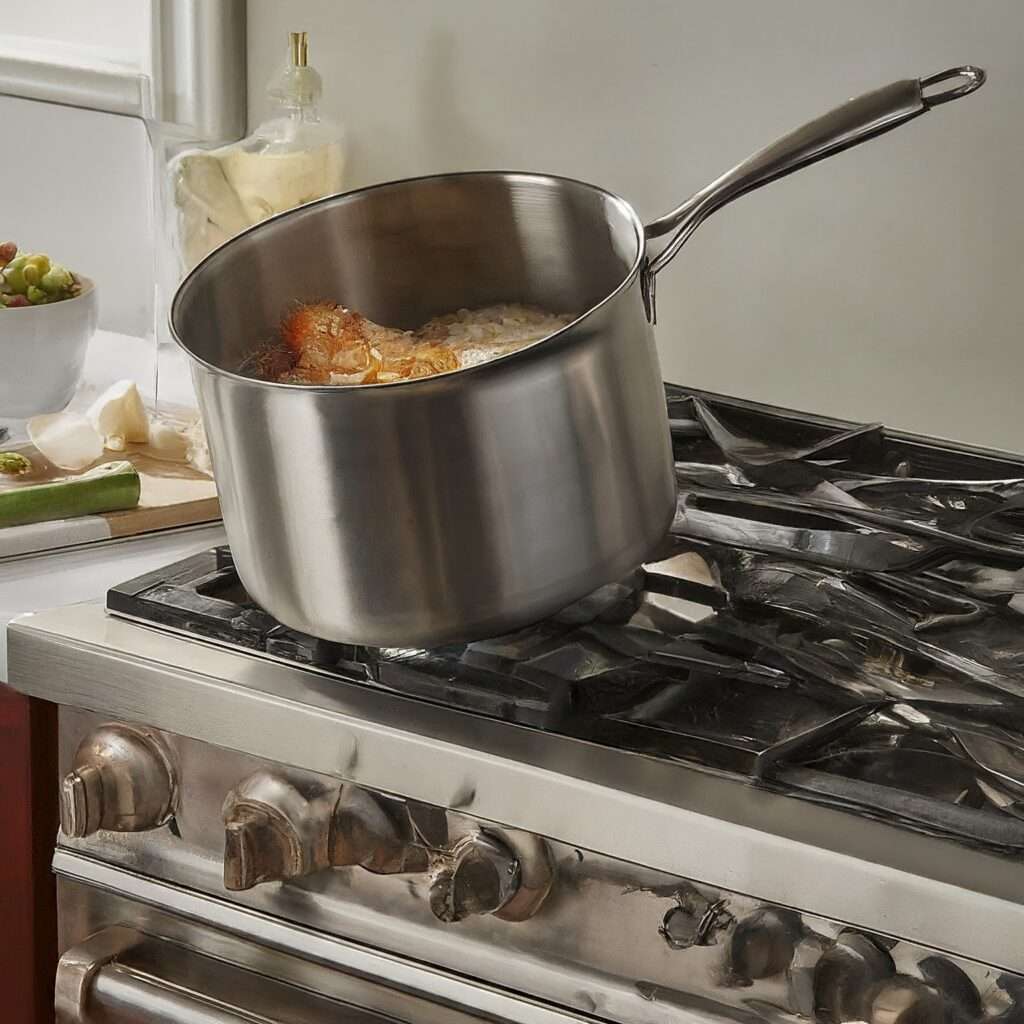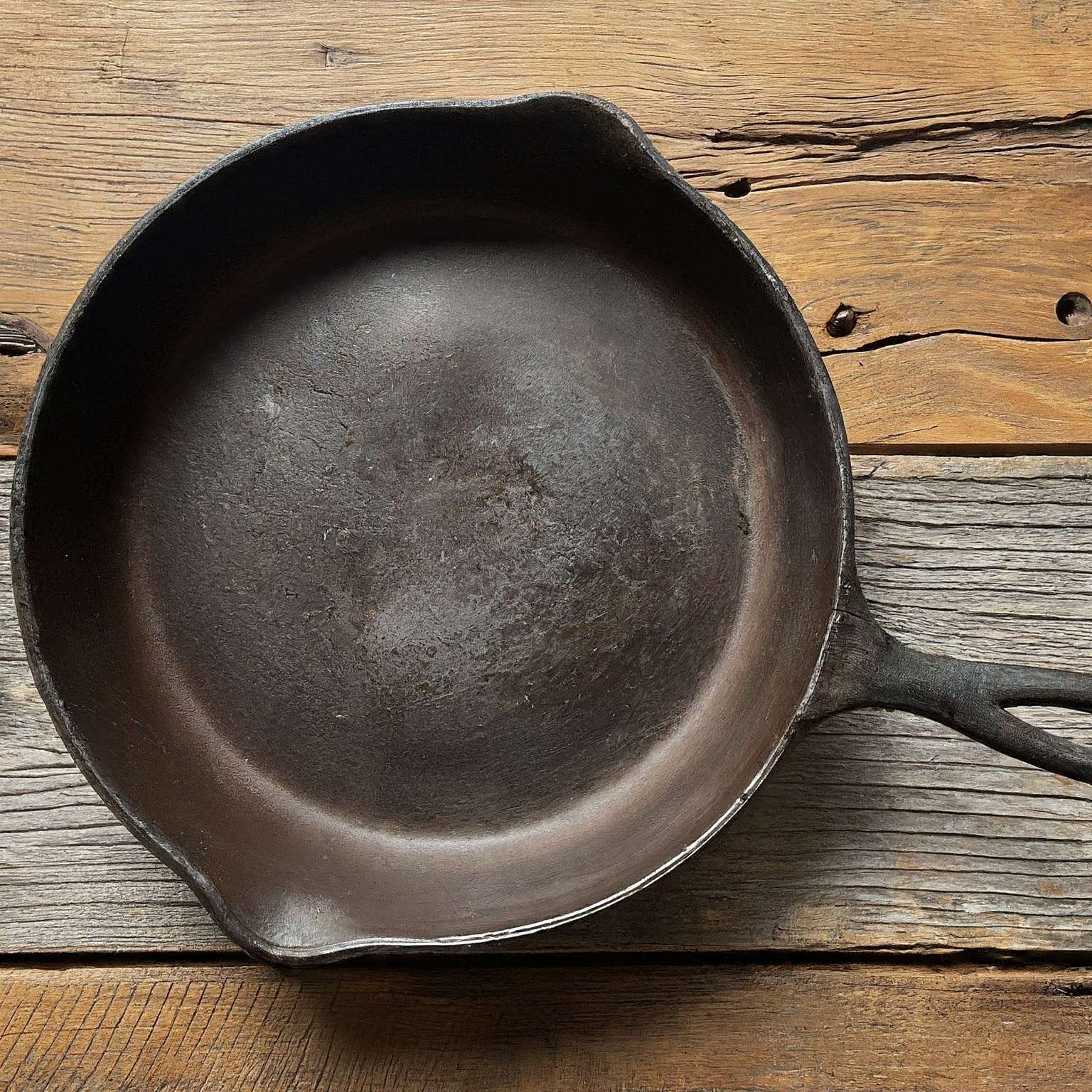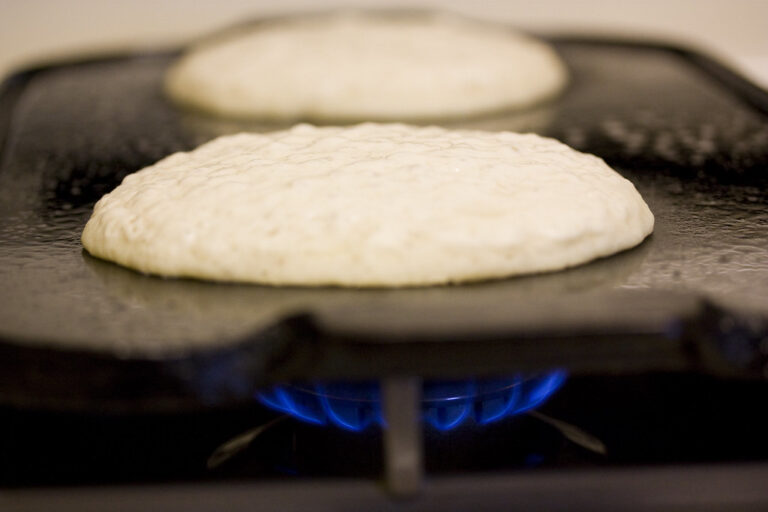Are you wondering why your pan is slightly raised in the middle? Well, there could be a few common causes for this issue. In this article, we will explore the impact of heat distribution, uneven cooking surfaces, and potential solutions for a raised pan middle.
Additionally, we will discuss the importance of proper pan maintenance and factors to consider when purchasing a new pan. Stay tuned for expert tips on preventing pan warping.
Key Takeaways
- Uneven heat distribution and warping from high heat can cause a raised middle in a pan.
- Pan design and size can affect heat distribution, with smaller flat-bottom pans heating up faster and more evenly.
- Uneven cooking surfaces, such as gas stoves with burners of varying heights, can lead to pan instability and difficulty in cooking evenly.
- Pan material selection and proper maintenance, including avoiding excessive heat and using non-abrasive utensils, can help prevent a raised middle and ensure even heat distribution.
Common Causes of a Raised Pan Middle
If your pan is slightly raised in the middle, it’s likely due to common causes such as uneven heat distribution or warping from high heat. The size of the pan can have an impact on how heat is distributed.
Smaller pans tend to heat up faster and more evenly, while larger pans may struggle to distribute heat evenly across their surface. This can result in the center of the pan heating up faster than the edges, causing it to raise in the middle.
Additionally, using a high flame can also affect the stability of the pan. The intense heat can cause the metal to expand unevenly, leading to warping and a raised middle.
To prevent this, ensure that you’re using the appropriate pan size for the heat source and avoid using excessively high flames.
Impact of Heat Distribution on Pan Shape
You’ll notice that the shape of your pan is affected by how heat is distributed. The impact of pan design and the consequences of uneven heat distribution can result in a pan that is slightly raised in the middle. Let’s take a closer look at how different pan designs and heat distribution methods can affect the shape of your pan.
| Pan Design | Heat Distribution Method | Pan Shape |
|---|---|---|
| Flat-bottom | Evenly distributed heat | Even |
| Rounded | Uneven heat | Raised |
| Concave | Uneven heat | Sunken |
As you can see, the design of your pan plays a crucial role in how heat is distributed. A flat-bottom pan with evenly distributed heat will result in a pan that maintains an even shape. However, a pan with a rounded or concave design, combined with uneven heat distribution, can cause the pan to become raised or sunken in the middle. This can affect the overall cooking performance and the presentation of your dishes. So, next time you notice a raised pan middle, consider the impact of heat distribution and pan design.

Effects of Uneven Cooking Surfaces on Pan Stability
When you cook on an uneven surface, such as a gas stove with burners of varying heights, it can affect the stability of your pan. Uneven cooking surfaces can cause your pan to wobble or tilt, making it more difficult to cook evenly and potentially increasing the risk of accidents.
It’s important to consider the heat distribution and stability of your cooking surface when selecting a pan to ensure optimal cooking results.
Uneven Heat Distribution
Your pan’s slight raise in the middle may be due to uneven heat distribution. Heat conductivity factors play a significant role in how heat is distributed across the pan’s surface. Different materials have varying levels of heat conductivity, affecting how evenly the heat spreads.
For example, copper pans have excellent heat conductivity, ensuring even heat distribution. On the other hand, pans made from materials like stainless steel or cast iron may have uneven heat distribution due to their lower heat conductivity.
Additionally, the size of the pan can impact heat distribution as well. A larger pan may struggle to distribute heat evenly, causing the middle to be slightly raised.
Consider using a smaller pan or adjusting the heat source to achieve more even heat distribution and prevent the pan from raising in the middle.
Pan Material Selection
Consider choosing a pan material that has excellent heat conductivity to ensure even heat distribution across the surface. This will help prevent any raised or uneven areas in your pan.
Here are four factors to consider when selecting a pan material for optimal heat conduction and durability:
- Copper: Copper pans are known for their exceptional heat conductivity, allowing for precise temperature control. However, they can be expensive and require regular maintenance.
- Aluminum: Aluminum pans also offer excellent heat conductivity at a more affordable price point. They’re lightweight and durable, but may react with acidic foods if not properly coated.
- Stainless Steel: Stainless steel pans are durable and resistant to corrosion. However, they’ve lower heat conductivity compared to copper or aluminum, which can result in uneven heating.
- Cast Iron: Cast iron pans are renowned for their excellent heat retention, making them ideal for searing and slow cooking. However, they take longer to heat up and require proper seasoning and maintenance.
Potential Solutions for a Raised Pan Middle
One option you could try is placing a heavy object on top of the raised area to help flatten it. This can be done by placing a flat-bottomed pan or a cast-iron skillet on top of the raised area while the pan is still warm. The weight of the object will help to press down and flatten the raised portion of the pan. Another potential solution is to heat the pan on high heat and then quickly cool it by placing it in cold water. The rapid change in temperature can sometimes cause the pan to contract and flatten out. Additionally, regular pan maintenance can help prevent the pan from becoming raised in the middle. This includes avoiding excessive heat, using non-abrasive utensils, and properly cleaning and drying the pan after each use.
| Potential Solutions | Pan Maintenance |
|---|---|
| Place heavy object on raised area | Avoid excessive heat |
| Heat and cool rapidly | Use non-abrasive utensils |
| Regular pan maintenance | Proper cleaning and drying |
Importance of Proper Pan Maintenance
Taking care of your pan is crucial for maintaining its performance and durability. Proper pan maintenance not only prevents uneven heat distribution but also extends the lifespan of your pan.
Prevents Uneven Heat Distribution
If your pan is slightly raised in the middle, it may cause uneven heat distribution. This can result in food cooking unevenly and potentially burning in certain areas. To prevent warping and ensure even heat distribution, here are some tips for pan maintenance:
- Avoid drastic temperature changes: Rapidly heating or cooling your pan can cause it to warp. Gradually heat or cool your pan to prevent this.
- Use the right utensils: Metal utensils can scratch the surface of your pan and weaken its structure. Opt for non-metal utensils to prevent potential warping.
- Proper storage: Stacking heavy pans on top of each other can lead to warping over time. Store your pans in a way that prevents them from being crushed or bent.
- Follow manufacturer’s instructions: Different pans have different care instructions. Always read and follow the manufacturer’s guidelines to maintain your pan’s integrity.
Extends Pan Lifespan
To extend the lifespan of your pan, proper maintenance is crucial. Regularly caring for your pan not only ensures its longevity but also prevents uneven heat distribution.
By taking the time to clean your pan properly after each use, you can remove any leftover residue that may affect its performance. Avoid using abrasive cleaners or harsh scrubbing tools that can scratch the surface of your pan.
Additionally, storing your pan properly, such as by stacking it with protective pan protectors, can prevent scratches and dents. Using the right cooking utensils, such as silicone or wooden ones, can also help maintain the pan’s non-stick coating and prevent damage.
Enhances Cooking Performance
Your cooking performance will greatly improve with a well-maintained pan. Here’s how you can enhance your cooking experience:
- Improving Durability: Regular maintenance of your pan prevents it from warping or developing hot spots. Proper cleaning and storage will help extend its lifespan.
- Maintaining Even Heat: A well-maintained pan ensures that heat is evenly distributed across its surface. This allows for consistent and precise cooking, reducing the risk of burnt or undercooked food.
- Efficient Cooking: With even heat distribution, your ingredients will cook more evenly and at the desired temperature. This results in better flavors and textures in your dishes.
- Versatility: A well-maintained pan can be used for a variety of cooking techniques, from searing and sautéing to simmering and baking. Its durability and even heat distribution make it a versatile tool in your kitchen.
Factors to Consider When Purchasing a New Pan
When buying a new pan, consider factors such as material, size, and heat distribution. These factors will greatly impact your cooking experience and the quality of your meals. Here are some expert tips to help you make the best choice:
| Material | Size | Heat Distribution |
|---|---|---|
| Stainless steel | 8 inches | Evenly distributes heat for precise cooking |
| Cast iron | 10 inches | Retains heat for excellent searing and browning |
| Non-stick | 12 inches | Prevents food from sticking and makes cleaning a breeze |
Choosing the right material is essential. Stainless steel offers durability and is great for everyday cooking, while cast iron is perfect for high-heat cooking. Consider the size of the pan based on your cooking needs. Lastly, ensure that the pan has excellent heat distribution to avoid hot spots. Keep these factors in mind, and you’ll be well on your way to finding the perfect pan.
Expert Tips for Preventing Pan Warping
To ensure your pans stay in top shape and avoid warping, it’s crucial to incorporate proper pan maintenance and make informed pan selections. Here are some expert tips to help you prevent pan warping:
- Avoid extreme temperature changes: Rapidly moving your pan from high heat to cold water can cause warping. Gradually cool down your pan before washing it to prevent this issue.
- Use the right cooking utensils: Using metal utensils on non-stick pans can scratch the surface and potentially lead to warping. Opt for wooden or silicone utensils to protect your pans.
- Avoid high heat: Exposing your pans to excessively high heat can cause them to warp. Stick to medium or medium-high heat settings to prevent this issue.
- Choose quality pans: Investing in high-quality, thick-bottomed pans can reduce the risk of warping. Look for pans made from durable materials like stainless steel or cast iron.
Conclusion
In conclusion, a pan being slightly raised in the middle is a common issue caused by uneven heat distribution and cooking surfaces.
It can be resolved by properly maintaining the pan and considering factors like material and thickness when purchasing a new one.
Following expert tips for preventing pan warping will also help ensure a flat cooking surface for better results.




